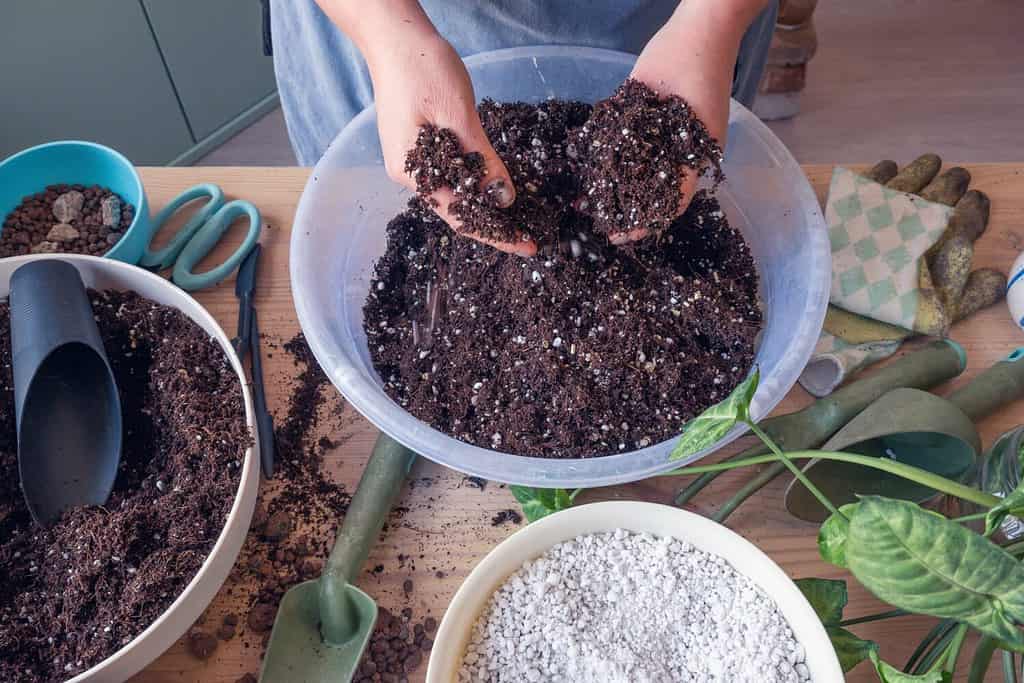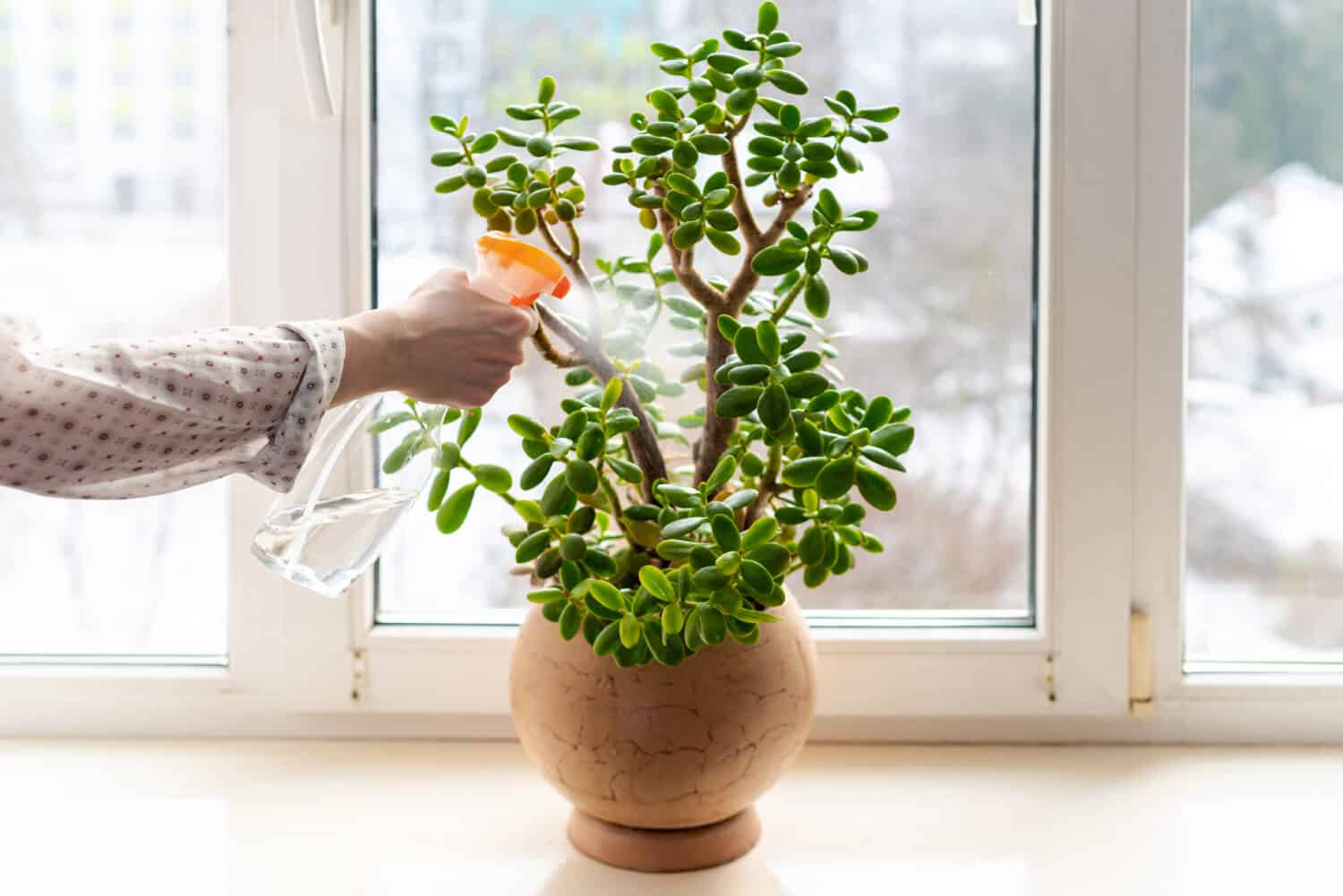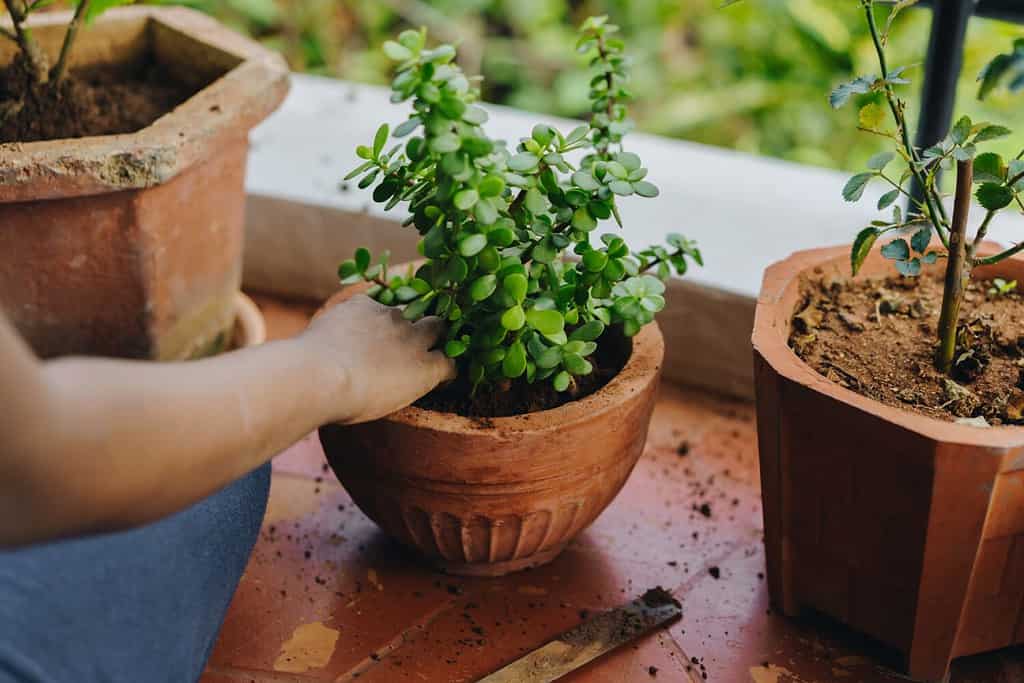Succulents are some of the most popular houseplants around the world. They can be found in fancy plant shops and home-improvement stores alike. Of their lovable traits, they are adorably unique, having prickles, spines, and on some occasions, even flowers!
One particularly awesome group of succulents is jade plants. Jade plants have thick succulent stems, with full and voluminous leaves that almost look like they are inflated with a bit of water. Succulents such as jades are relatively low-maintenance houseplants because they require (and even prefer) having less water as compared to other plants.
Many people revere jade plants as a sign of good fortune, which is why they are a common gift to give around the world. They also do have some special care needs though, mostly in terms of the type of soil they are in.
Everyone has their tricks for creating the best soil for jade plants. Some tricks involve using specialized mixes, while others rely on setting your plants off with the correct components to tolerate water stress.
What Are Jade Plants?

Jade plants come in many shapes and sizes. This
Crassulahas the nickname ogre ears because of its long tubular leaves.
©Gonzalo de Miceu/Shutterstock.com
Jade plants are unique, having extremely enlarged leaves, and trunks that appear plump and leathery. They sometimes can seem like the perfect hybrid between an alien animal and a plant!
Don’t get them confused with other plants that have similar features, as they are not considered to be cacti. Instead, they are considered to be succulents, which are a different group entirely. Jade plants are native to the Capetown region of South Africa. In their native habitat, they can grow as large as 10 feet tall, with huge limbs and leaves. They also fare decently well in captivity and have been known to live for tens to hundreds of years. When compared to their native appearance, most domestic jade plants don’t reach such staggering heights.
Just like other succulents, jade plants are drought-resistant and love sunlight. Thus, if you have a warm, sunny window, they fare well with occasional watering! Generally speaking, they are fairly easy to take care of, but they do have some basic requirements that must be met in terms of sunlight, water, and soil.
What Soil Is Best for Jade Plants?
Just like other succulents, jade plants aren’t too fond of sitting in water. They do need some moisture to survive, but they are especially sensitive to excess water near their roots. They have many adaptations to deal with drought conditions. Although that is beneficial for them in their natural habitat, it doesn’t make them especially sensitive to flooding conditions (or even moderate moisture conditions).
To combat these challenges, we have to be especially careful in selecting and creating soil mixes for our jade plants. For the most part, looser and more well-draining soils are best for jade plants. Anything that allows for water flow and aeration can help your jade plant to succeed. Including things such as sand, perlite, and vermiculite can all help to increase the quality of your succulent soil.
While there is no “singular best” soil for jade plants, there are a few options you can choose from for creating amazing soil!
Basic Budget Succulent Soil

Creating the perfect potting soil can honestly be a challenge. Luckily, there are many recipes out there to lead you!
©Cem Selvi/Shutterstock.com
One great option for creating a budget-friendly jade plant soil is by using regular potting soil as a base filler. On top of using potting soil, you can add in some more expensive materials such as perlite that make it more suitable for succulents.
One great recipe is:
- 3 parts potting soil
- 2 parts coarse grit sand
- 1 part perlite
After mixing your soil together, you can lightly pre-wet it so that it isn’t completely hydrophobic when you plant your jade plant. Make sure to let the soil dry out again slightly before planting so that your jade plant doesn’t take on too much water.
Variations on Jade Potting Soil Mix
In addition to this basic recipe, there are also other variations that you can try out. Each varies slightly in terms of how much of each component is present.
One alternative recipe is:
- 1 part potting soil
- 1 part sand
- 1 part perlite
Another great option is:
- 2 parts potting soil
- 1 part perlite
- 1 part vermiculite
4 Critical Care Tips for Your Jade Plant
Now that we have discussed what jade plants are and what types of soil they thrive in, we can discuss some important tips that you should keep in mind when caring for them.
Be Diligent With Your Watering

There isn’t a great standard schedule that you can apply for watering your jade. It is best to use the dryness of your soil as an indication of your plant needing water.
©TSViPhoto/Shutterstock.com
One of the most important things to think of when you are caring for your jade plant is watering. Even if you set up your plant with the absolute best soil, it still will be sensitive to increased moisture conditions. Unlike most house plants, bottom-watering and other related techniques are not your best option, as they can oversaturate your plant’s soil.
Most sources agree that watering your jade plant whenever the top one or two inches of the soil is dry is the best way to keep them happy. This ensures that your plant likely isn’t too wet near the roots, and allows you to have a visual indication of when you should water!
Water Thoroughly
One common issue that people have with growing succulents is that they water their plants too frequently, or that their watering is not suited for the plant’s needs. In other words, watering your plant too much, or watering it in the incorrect amount are common mistakes.
Although it may sound counter-intuitive, it is often best to water your jade plant very deeply. Assuming that your jade’s soil is well draining and that it is potted in a suitable container, watering thoroughly actually reduces the risk of it taking on unneeded water-related stress. Watering this way is especially important during the summertime, as increased heat can dry out your plant’s soil faster than usual.
Give Your Jade Plant Light

Even though your jade plant wants as much light as possible, be sure that it isn’t getting too much sun, or getting burnt from the heat of a windowsill!
©Sahana M S/Shutterstock.com
Jade plants have a lot of various adaptions that work best in growing conditions that have a lot of light and heat. When they aren’t given enough light, they simply won’t succeed, even if they have enough nutrients or the perfect soil.
At a minimum, jade plants need at least 4-6 hours of direct sunlight a day. With that said, they usually aren’t upset if you give them even more. In fact, many find that increasing sunlight levels generally leads to improved growth.
When you are placing your jade plant, monitor it for a short time. Make sure that it is happy wherever you place it. If you find that it is not growing or starting to look damaged, you may want to move it somewhere else. Additionally, if you can’t find a great place that has 4-6 hours of direct natural light, you can also look into supplying it with artificial grow lights!
Consider Propagating Your Jade Plant
One last care tip is to have fun with your jade plant. They can be incredibly rewarding plants to grow, that yield gorgeous foliage that stays lustrous all year round.
Unfortunately, they are incredibly slow growers, which often prompts people to try out propagation. In case you aren’t familiar, propagation is the process of cloning a plant from a leaf or a cutting, and it can work surprisingly well with jade plants.
To propagate your jade plant, you can snap off a leaf and allow it to callous on a counter for a few days. Afterward, you can place the leaf with the cut side down over some dirt and wait for it to root. Additionally, you can also start a propagation from a cutting of the jade plant’s stems. Take note though, that jade plants’ propagations are incredibly slow-growing, so it may take some time and perseverance!
The photo featured at the top of this post is © Krichevtseva/Shutterstock.com
Thank you for reading! Have some feedback for us? Contact the AZ Animals editorial team.







